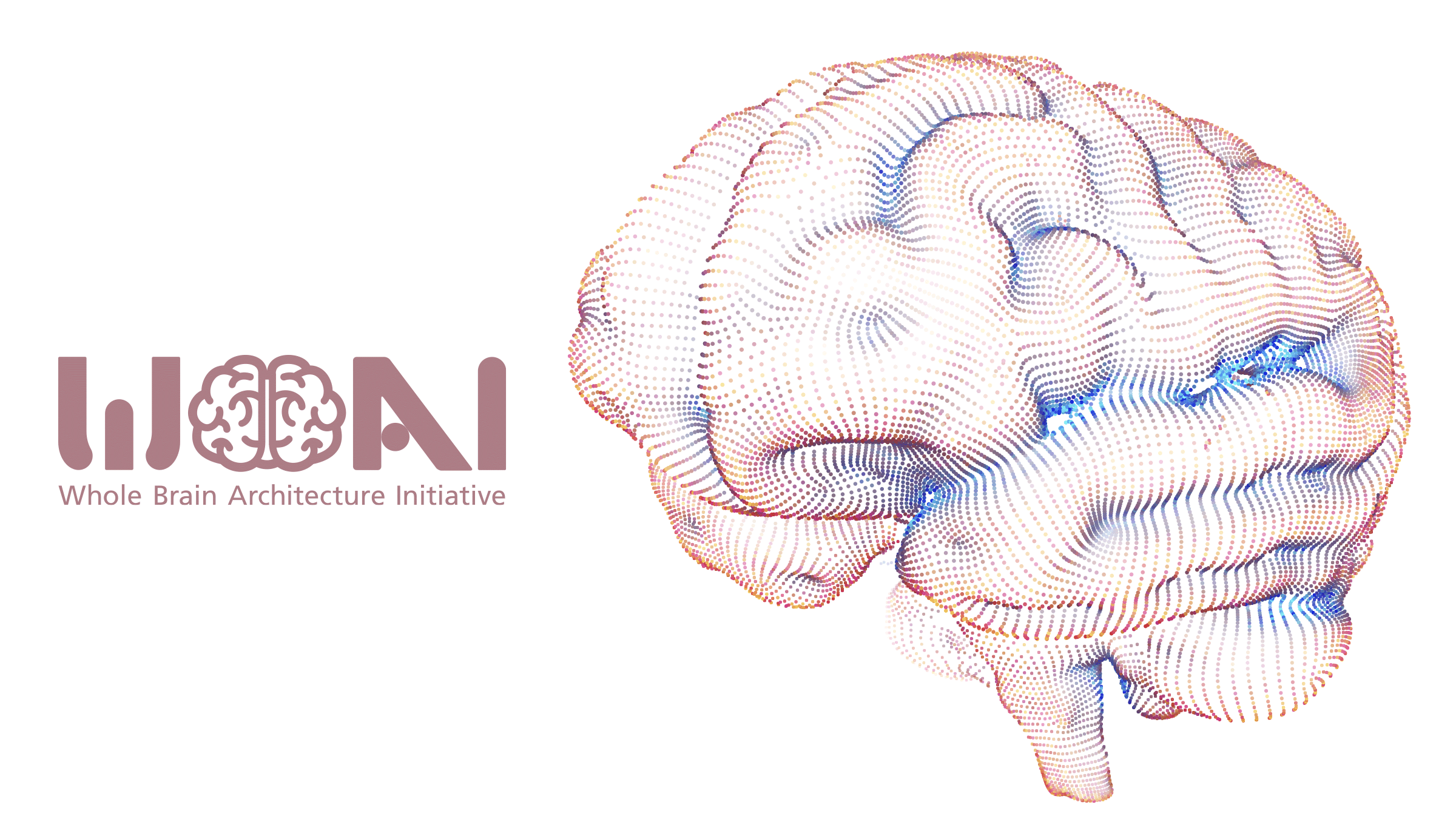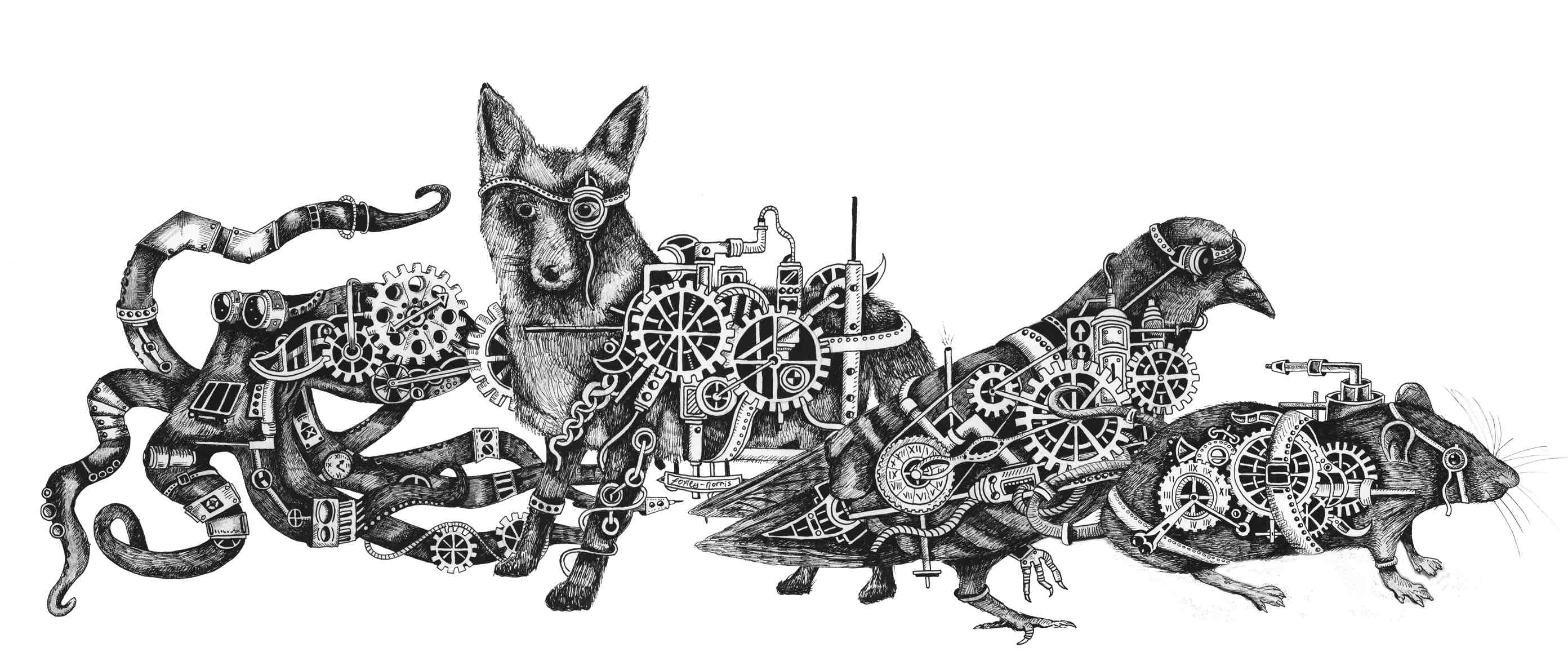Image Credit Squidoodle
In 2019, WBAI supports the Animal-AI Olympics, a competition to encourage the participants to replicate animal intelligence, organized by Leverhulme Centre for the Future of Intelligence (CFI), and will award the WBA (Whole Brain Architecture) Prize for the most biologically plausible entry referring to the brain at NeurIPS 2019.
Current AI is not equipped with general intelligence to survive in the wild as animals are. Thus, replicating animal intelligence would advance technology for more general AI.
Meanwhile, the R&D of artificial general intelligence (AGI) referring to the animal (or human) brain is promising [Hassabis, D., et al., 2017], as, for one reason, the only existing general intelligence is realized in the brain.
Moreover, the vastness of the effect of AGI to the future society motivates international interchange in the technology.
For the reasons stated above, WBAI, an NPO to promote the democratic development of brain-inspired AGI, wholeheartedly supports the Animal-AI Olympics.
We urge anyone interested in AGI research to participate in the competition through the Animal-AI Olympics page and to apply for the WBA Prize appreciating brain-inspired AI (see details below).
Important Dates
* Please refer to the organizer’s page for the latest information.
- April 30th: ‘Environment 0.1’ release ✔
- July 1st: Competition release with ‘Environment 1.0’✔
- July 8th: Submission starts✔
- September 1st: Mid-way $10,000 AWS credits prize deadline
- November 1st: Final submission (including for WBA Prize)
- December: Awarding at NeurIPS 2019
The WBA Prize
The WBA (Whole Brain Architecture) Prize will be awarded to the most biologically plausible entry applied for the prize, with US$4,000 grant (from WBAI) and up to US$1,000 travel grant to speak at NeurIPS 2019 (from the organizer).
Application
To apply for the prize, you must submit a summary and source code to the EasyChair page.
The Summary
You must write your team ID and the date of application at the top of the summary.
The summary should detail how your methodology with a particular focus on the ways in which it is biologically plausible with from 1,000 up to 1,500 English words. More specifically, please:
- State structural correspondence between your architecture and brain architecture, if any (a block diagram would help).
- State mechanisms being used that are similar to those found in the brain, if any.
- State if you have modeled your solution on certain animals (including humans).
- Include details about how you think your approach can help us understand biological intelligence.
Source Code
We appreciate code readable for the reviewers.
Review Process
An independent panel of experts will be convened for review.
Biological plausibility as well as generality and the simplicity of the code will be appreciated (see the GPS criteria). Biological plausibility will be evaluated by your summary. Generality will be evaluated from your competition record. The code will be used to evaluate the simplicity and to validate the summary.
References
References for biological plausibility
- Kriegeskorte, N. & Douglas, P.K. (2018) Cognitive computational neuroscience. Nature Neuroscience, 21, 1148–1160.
- Hassabis, D., et al. (2017) Neuroscience-Inspired Artificial Intelligence. Neuron, 95(2), 245-258.
- O’Reilly, et al. (2016) Computational Cognitive Neuroscience
- WBAI: Prospect for Human-like AGI via the WBA Approach
- WBAI Wiki




 Japanese
Japanese